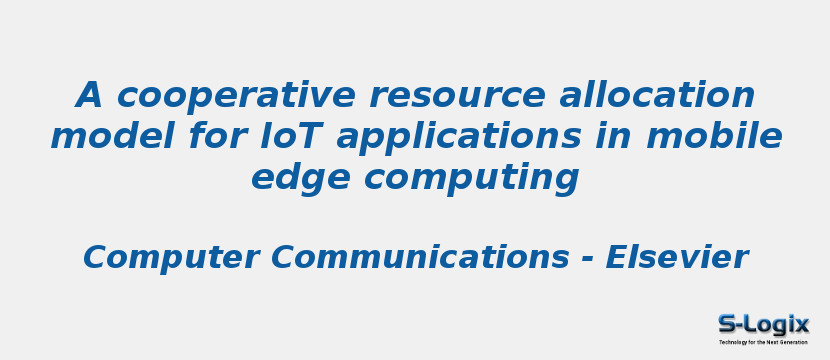Research Area: Internet of Things
With the advancement in the development of the Internet of Things (IoT) technology, as well as the industrial IoT, various applications and services are benefiting from this emerging technology such as smart healthcare systems, virtual realities applications, connected and autonomous vehicles, to name a few. However, IoT devices are known for being limited computation capacities which is crucial to the device’s availability time. Traditional approaches used to offload the applications to the cloud to ease the burden on the end user’s devices, however, greater latency and network traffic issues still persist. Mobile Edge Computing (MEC) technology has emerged to address these issues and enhance the survivability of cloud infrastructure. While a lot of attempts have been made to manage an efficient process of applications offload, many of which either focus on the allocation of computational or communication protocols without considering a cooperative solution. In addition, a single-user scenario was considered. Therefore, we study multi-user IoT applications offloading for a MEC system, which cooperatively considers to allocate both the resources of computation and communication. The proposed system focuses on minimizing the weighted overhead of local IoT devices, and minimize the offload measured by the delay and energy consumption. The mathematical formulation is a typical mixed integer nonlinear programming (MINP), and this is an NP-hard problem. We obtain the solution to the objective function by splitting the objective problem into three sub-problems. Extensive set of evaluations have been performed so as to get the evaluation of the proposed model. The collected results indicate that offloading decisions, energy consumption, latency, and the impact of the number of IoT devices have shown superior improvement over traditional models.
Keywords:
Author(s) Name: Xianwei Li, Liang Zhao, Keping Yu, Moayad Aloqaily, Yaser Jararweh
Journal name: Computer Communications
Conferrence name:
Publisher name: Elsevier
DOI: 10.1016/j.comcom.2021.04.005
Volume Information: Volume 173, 1 May 2021, Pages 183-191
